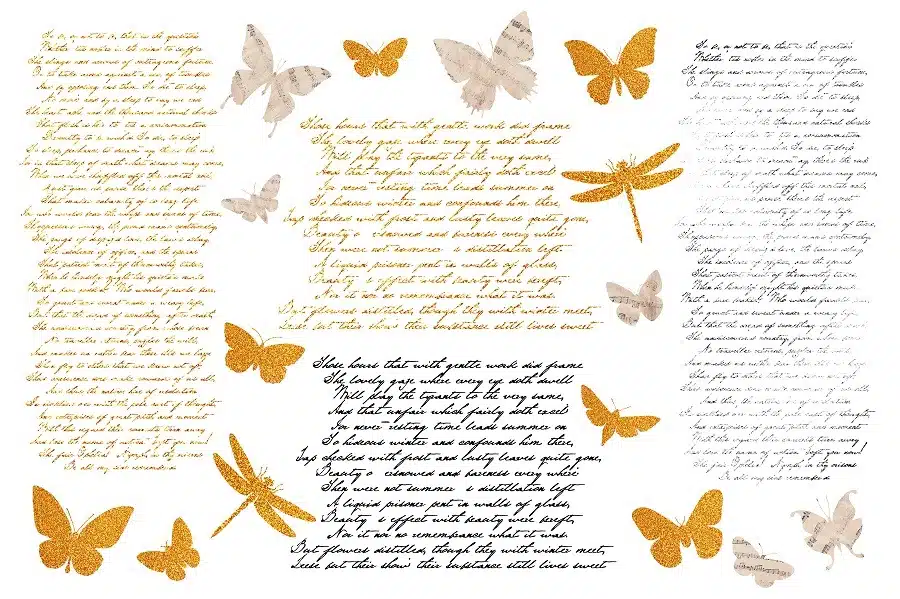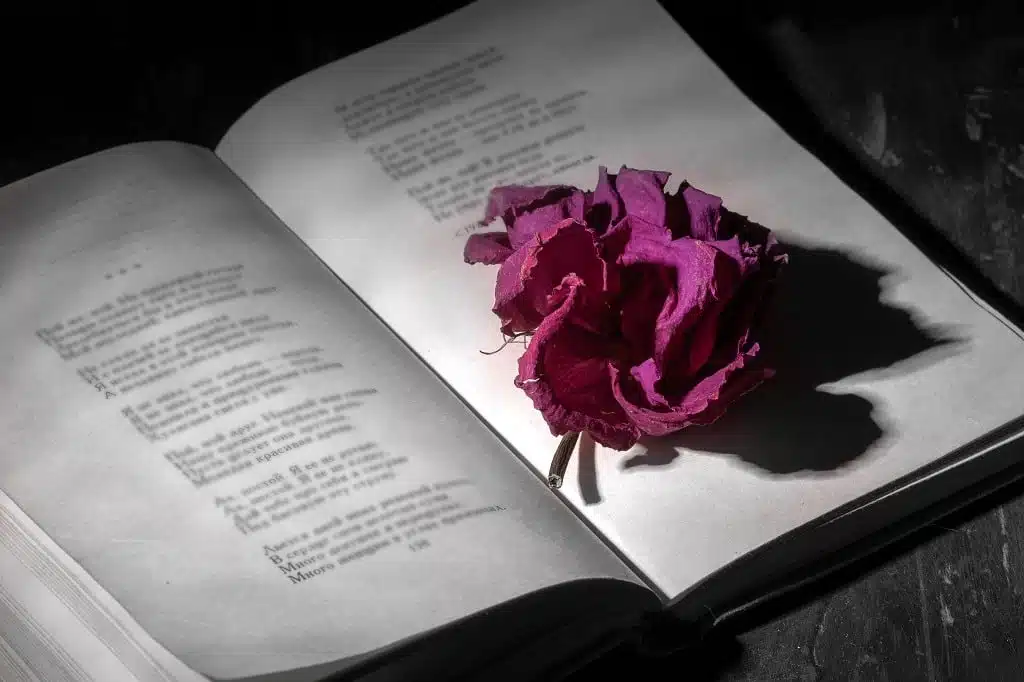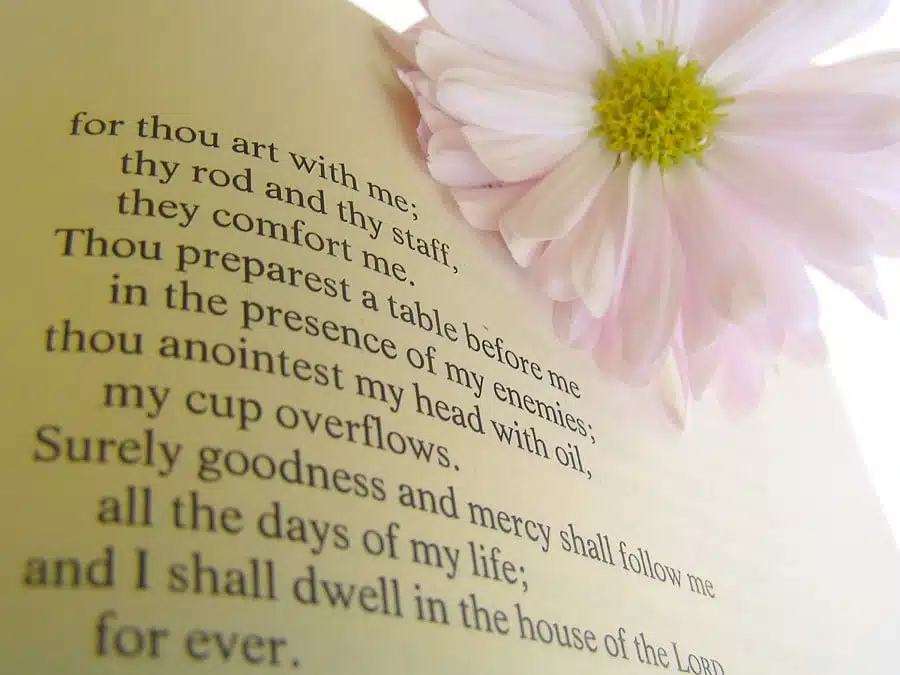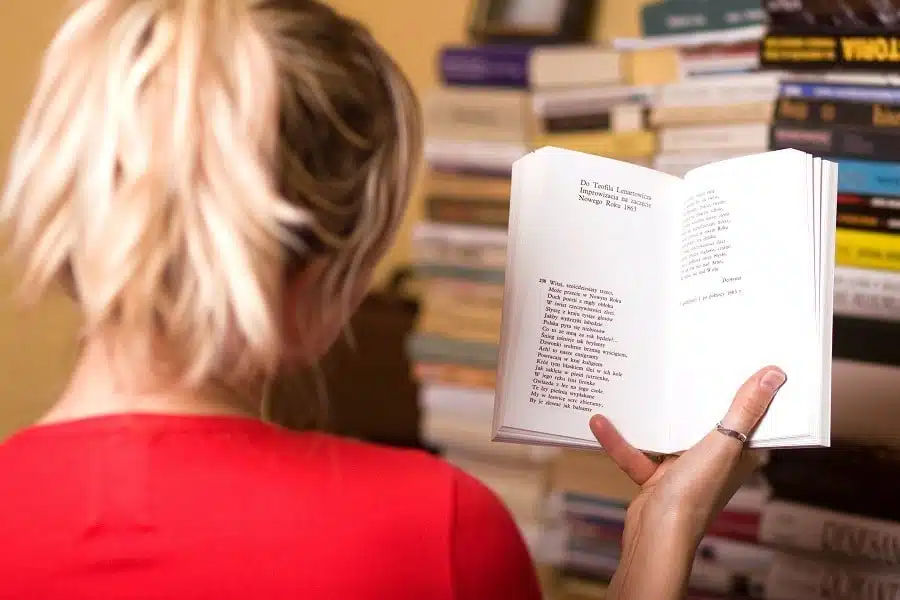Here’s the difference between a verse and a stanza:
A stanza is a group of lines set apart from the other lines with double space or indentations.
A verse is a metrical line, a stanza, or poetry.
If you want to know all about the differences between verses and stanzas, then you’re in the right place.
Let’s jump right in!

What Are the Differences Between Verses and Stanzas?

| Verse | Stanza | |
| Definition | A term that’s given to different parts of poetry, which can be a line, a stanza, or the whole poem | The main unit of writing poetry made up of lines |
| How it’s structured | It can be a line, a stanza, or the entire poem | Composed of lines following a rhyming meter or pattern |
| Scope | A broader term that may refer to parts of or the entirety of a poem | A building block or a basic unit of poetry; thus more specific |
| Nature | Typically generic and may not stand on its own as it can be merely a part of a whole | Each stanza has a purpose and unique concept |
| Specificity | Verse as a term has evolved depending on how it’s used | Stanza is one of the main elements of writing poetry itself |
It’s been my experience that the general public rarely ever uses the word “stanza.”
Whether referring to a section of a song or a section of a poem, you’ll often hear people default to “verse.”
That’s not necessarily a bad thing since language is always going to evolve based on general consensus, but it does feel like there’s something inherently wrong about throwing away an entire word.

After all, stanzas are a much more specific measurement than verse, at least in terms of poetry.
A stanza is a group of lines uninterrupted by white space.
The beginning and the end are clearly defined, and the length of a poem’s stanzas is immediately visible to the reader and significant to the overall structure of a poem.
What Is a Verse and How Is It Different From a Stanza?

Verse has become a fairly ambiguous term in poetry, likely as a result of people throwing it around casually over the generations.
There is still always a general understanding that a verse is a “unit of poetry,” but the size of that unit isn’t clear when you call it a verse.
A verse might refer to a single metrical line, or more often, as a synonym for stanza.
A verse might even refer to the entire poem, even if it has multiple stanzas. It’s a bit useless as a measurement because there’s too much disagreement over what exactly the length of a verse is as a unit.
It does have enough implication that’s somewhat useful, though. Verse is commonly understood to be metered poetry, such as blank verse.
So when someone refers to verse in poetry, you can at least assume meter, if nothing else.

But if a verse can mean a stanza or a metered poem, why not just use those terms? Well, the simple answer is that English just happened to evolve this way.
Like many artistic terms, a verse isn’t a scientific measurement that you can place at increments on a ruler, nor has its use been consistent across historical figures and academic works.
If it didn’t have one other extremely important use, then I might even go so far as to call it an obsolete term. But that other term is very significant because it’s very different.
You see, a verse can also refer to a unit of a song. In this instance, verses are largely understood to be the musical equivalent of a stanza.
A group of lines in a song form up a single unit and this unit is called a verse.
What Is a Stanza and How Is It Different to a Verse?

A stanza, by stark contrast, is so easy to point out on the page that it’s borderline clinical.
Wherever there is an extra line break, the next stanza begins. Any group of lines that is not punctuated by white space is a stanza, regardless of the number of lines.
You can think of a stanza as the poetic equivalent to a paragraph. It’s a complete group of thoughts, and wherever those thoughts end, you move on to the next one.
Some poems might even consist of only a single stanza, while others may have forty or fifty.
You can even use stanzas to make instant observations about a poem. A poem consisting of a single 14-line stanza in which the lines look similar to a sonnet is most likely. (From there, you would count out the meter to be sure, but it’s a fairly safe bet.)
Meanwhile, a single tercet (a 3-line stanza) with short lines could be your cue to count syllables to see if you’re dealing with a haiku.

Even in free verse, the lengths of stanzas might give you some visual hint as to how you’re supposed to feel if the writer was particularly attentive.
A poem with fiercely long stanzas that leave little rest for the eyes may be meant to feel dense and suffocating or to clue you in that the thoughts contained within are complex.
Meanwhile, a poem with several very short stanzas might be very relaxing to read, and that may be an important part of the writer’s intent. They may be visually indicating to the reader that the thoughts contained within are meant to come and go freely.
Large discrepancies between stanzas can be important as well.
A poem that has a short repeating chorus might purposely use it to give the reader visual and mental breaks as they follow a troubling narrative.
A poem with one unusually long stanza may be purposely drawing attention to the keystone moment of the poem, the central image that the writer wants to focus on.
Importantly, “stanza” is a term exclusive to poetry.
A paragraph of prose is not a stanza, and a verse of song is not a stanza, though the latter could be debatable depending on perspective.
From the moment you hear someone use the word “stanza”, you know instantly that the lines on the page are meant to be a poem.
How Do Verses and Stanzas Differ in Sound and Silence?

There is also a difference in connotation.
A verse, whether in poetry or in song, is intended to be rhythmic and therefore to be heard, in some sense.
Whether it refers to the simple, studious beat of blank verse or the addictive bop of a pop song, a verse is something that has a special relationship with sound and with rhythm.
A stanza can be metered and/or rhymed, but it does not need to be.
A stanza may be intentionally silent, like a whispered thought meant to fall off the page and into the reader’s head.
Many, many poems of the modern era were written under the assumption that they would be read quietly in a library or a coffee shop.
The difference between verse and stanza is in many ways connected to the larger differences between music and poetry, so it should come as no surprise that one of the most significant divisions between the two is, ultimately, the sound made by the words.
